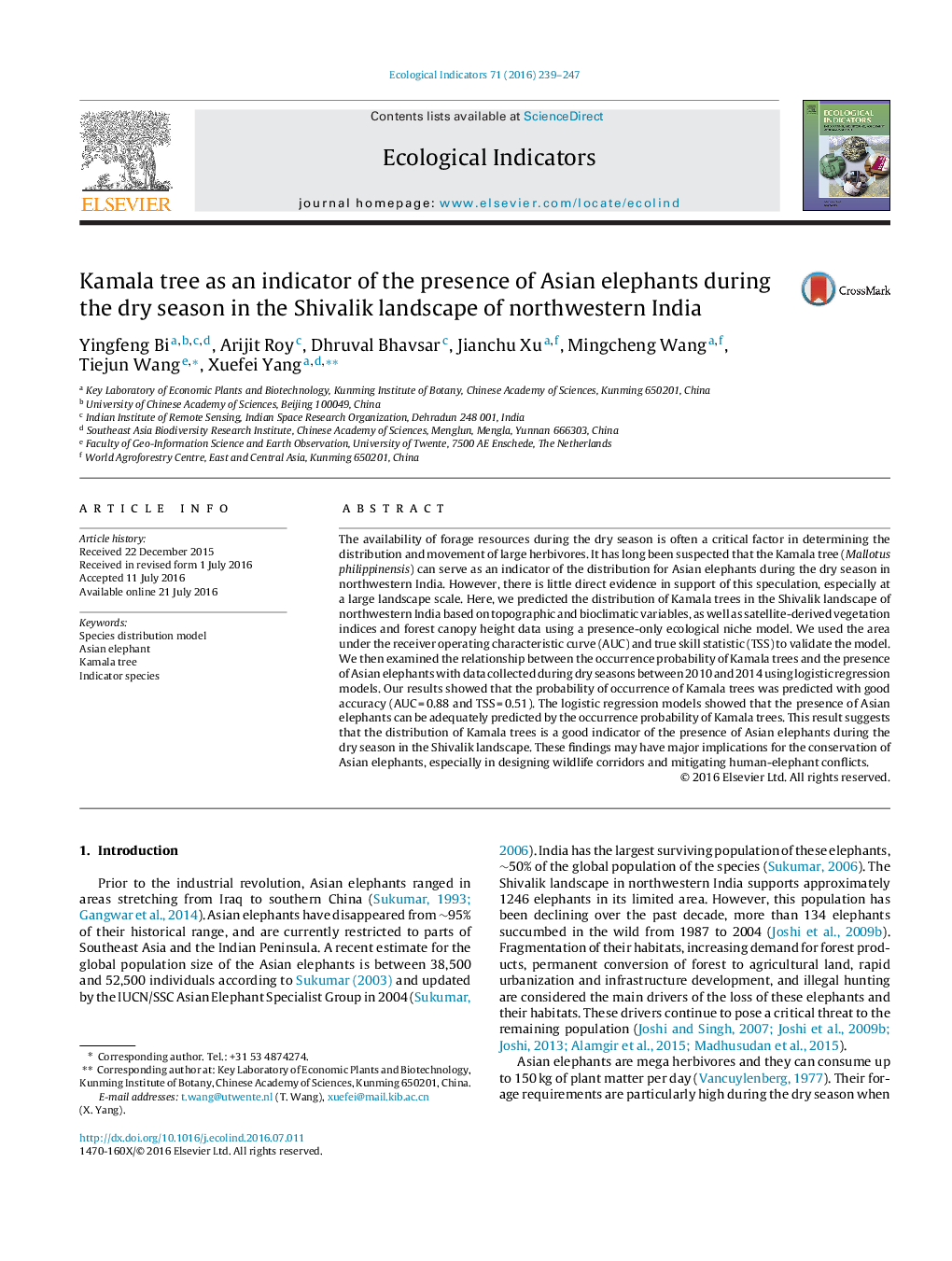| کد مقاله | کد نشریه | سال انتشار | مقاله انگلیسی | نسخه تمام متن |
|---|---|---|---|---|
| 6292938 | 1617131 | 2016 | 9 صفحه PDF | دانلود رایگان |
- We predicted the distribution of Kamala trees in the Shivalik landscape.
- We examined the relationship between Kamala tree and Asian elephant using a logistic regression model.
- The presence of Asian elephants was adequately predicted by Kamala tree.
- Our findings have major implications for the conservation of Asian elephants.
The availability of forage resources during the dry season is often a critical factor in determining the distribution and movement of large herbivores. It has long been suspected that the Kamala tree (Mallotus philippinensis) can serve as an indicator of the distribution for Asian elephants during the dry season in northwestern India. However, there is little direct evidence in support of this speculation, especially at a large landscape scale. Here, we predicted the distribution of Kamala trees in the Shivalik landscape of northwestern India based on topographic and bioclimatic variables, as well as satellite-derived vegetation indices and forest canopy height data using a presence-only ecological niche model. We used the area under the receiver operating characteristic curve (AUC) and true skill statistic (TSS) to validate the model. We then examined the relationship between the occurrence probability of Kamala trees and the presence of Asian elephants with data collected during dry seasons between 2010 and 2014 using logistic regression models. Our results showed that the probability of occurrence of Kamala trees was predicted with good accuracy (AUCÂ =Â 0.88 and TSSÂ =Â 0.51). The logistic regression models showed that the presence of Asian elephants can be adequately predicted by the occurrence probability of Kamala trees. This result suggests that the distribution of Kamala trees is a good indicator of the presence of Asian elephants during the dry season in the Shivalik landscape. These findings may have major implications for the conservation of Asian elephants, especially in designing wildlife corridors and mitigating human-elephant conflicts.
Journal: Ecological Indicators - Volume 71, December 2016, Pages 239-247
